I understand the use of ground wire at the home appliances but why is the neutral wire connected to ground at the transformer? Why doesn't the neutral wire go back to the power generation plants.
-
2In order to save one overhead line. Look up Y-delta transformer. – winny Jul 10 '18 at 16:20
-
1Because the transformer provides separation of primary and secondary currents. – analogsystemsrf Jul 10 '18 at 16:22
-
6The image is incorrect and results in a dangerous configuration, The Ground spike is at the panel and Neutral is connected to ground at the panel. Neutral may be tied to ground at the transformer in addition, but not configured as the primary connection to ground. – Jack Creasey Jul 10 '18 at 16:27
-
4Ground does not need to go back to the power generation site since the supply is 3 phase Delta with no neutral. – Jack Creasey Jul 10 '18 at 16:29
-
@JackCreasey In many countries yes it should be a five wire system, but not all. Four wire systems does exist. – winny Jul 10 '18 at 16:34
-
1@JackCreasey That looks like a perfectly normal TT installation to me. If it was TN-S, there would be a separate ground line from the transformer. However, if it's TN-C-S, then the incoming neutral should be grounded. – Simon B Jul 10 '18 at 16:34
-
1@SimonB In the configuration shown you may have unbalanced current flowing in each phase so will develop a voltage difference between Neutral and Earth wiring. This is dangerous. – Jack Creasey Jul 10 '18 at 17:15
-
@JackCreasey It's the way we do it here in the UK. If it's a TT or TN-S supply, then the supplier *doesn't* ground the neutral at the customer's end, and the customer is *prohibited* from connecting them in their wiring. If it's a TN-C-S, then the ground and neutral *are* linked at the supplier's cut-out, and the customer *may* add an earth spike, but isn't required to (yet). – Simon B Jul 10 '18 at 22:44
-
1@SimonB As I understand it only TNC applies to low voltage house supplies. https://electrical-engineering-portal.com/erection-procedures-of-earthing-arrangements-tnc-tn-s-tnc-s-and-tt Yes there are other configurations, but not for houses. In TNC the conversion from 4 to five wire occurs in the entry panel so there will be minimized N/E potential differences. – Jack Creasey Jul 10 '18 at 23:11
2 Answers
I understand the use of ground wire at the home appliances but ...
The earthing / grounding of applicances helps in two ways:
- It prevents the appliance case or chassis getting a high potential with respect to ground. Without this protection a live appliance (due to internal fault, for example) would present a risk to life should a person touch the appliance and have sufficient path to earth for a few tens of milliamps to flow.
- It provides a low impedance return to the transformer and when sufficient current flows it will blow the fuse or trip the breaker.
... why is the neutral wire connected to ground at the transformer?
Connecting to ground at the transformer (or at the incoming connection point, depending on local regulations) ties the return conductor to ground and effectively "neutralises" it. Because it presents a low risk of significant voltage on it the neutral lines are normally unfused.
Why doesn't the neutral wire go back to the power generation plants.
The diagram you provided hints at this.
- There is no connection between the three-phase, high voltage primary and the low-voltage secondary.
- The supply is feeding a three-phase transformer without a neutral on the primary side.
- The high-voltage network may be "floating" with no direct earth reference. This means that the distribution system can sustain a single earth fault on any one of its phases without causing an unplanned power interruption. This wouldn't be possible if the distribution system used a neutral as well.
From the comments:
I didn't understand the part about low impedance return path in the first part ...
Imagine that we have the option of earthing the neutral locally or back at the power station. The short local cable might have a resistance of, say, 0.05 Ω to earth while the much longer cable back to the substation might be, say, 10 Ω. Now create an earth fault by touching a live wire to the metal case of an appliance. Let's say that 10 A flows to earth. What voltage will the case rise to?
- For the local earth \$ V = IR = 10 \times 0.05 = 50\ \text{mV} \$. This is very safe.
- For the power station earth \$ V = IR = 10 \times 10 = 100\ \text{V} \$. This is dangerous.
The local neutral-earth link is safer.
... and the neutralising part of the 2nd highlight.
To "neutralise" means to make something ineffective. To neutralise a current carrying cable means to remove its voltage or potential difference with respect to earth. We do this by earthing it. In your picture we now have four current carrying conductors, three of which have high voltage with respect to ground and one, the neutral, will have close to zero potential as it has been neutralised.
So in order to minimize the potential of the appliance case in case of faults we need to choose the low impedance return path.
Correct.
'return' - does it mean that the ground wire actually is a part of a loop (as if connect to the power station at some point).
No. The transformer is isolating. There is no connection between the primary and secondary so no current flows from the house back to the power station. As far as the house is concerned the local transformer is the "power station".
Ok, I now understand neutralising. So earthing an appliance is also neutralising. Isn't it?
No, that's not quite the right way to think about it. There is normally no potential on the chassis or case of the appliance. They are not conductors. But you are correct that it prevents the chassis / case from achieving a high voltage.
So only a conductor which is always at a potential can be neutralised?
That doesn't make sense. If it's always at a potential then it can't be neutralised. Only if the supply would otherwise be floating can one of the conductors be neutralised. Let's look at a very simple example.

simulate this circuit – Schematic created using CircuitLab
Figure 1. (a) A floating battery. (b) An earthed battery.
In (a) the battery is floating. There is no ground connection unless there is a fault and one of the wires touches something earthed. Then the other-wire becomes live.
In (b) the battery negative has been connected to earth. It is grounded or neutralised and the other wire is 9 V with respect to earth.
One of the advantages of neutralising is that no fuses are required in the neutral line as there is no significant voltage with respect to earth.
- 168,990
- 12
- 186
- 385
-
I 'm an undergrad and therefore I am not well versed with the technical knowhow yet so please bear my newbie doubts. I didn't understand the part about low impedance return path in the first part and the neutralising part of the 2nd hightlight. Thanks in advance. – rustyelectron Jul 15 '18 at 18:36
-
See the update. Note that on this site we thank afterwards by upvoting and accepting answers. I think it's an Internet thing. Few are able to say "thank you" without adding "in advance". – Transistor Jul 15 '18 at 18:47
-
So in order to minimize the potential of the appliance case in case of faults we need to choose the low impedance return path. 'return' - does it mean that the ground wire actually is a part of a loop (as if connect to the power station at some point). Ok, I now understand neutralising. So earthing an appliance is also neutralising. Isn't it? – rustyelectron Jul 15 '18 at 19:26
-
-
So only a conductor which is always at a potential can be neutralised? – rustyelectron Jul 16 '18 at 17:50
-
-
@Transistor so normally HV power-lines doesn't have a neutral and It's added in power transformer? so if we were to earth outside our house and use that wire as a neutral wire, is that supposed to work to? I apologies for such a dumb question tho – John Cortex Apr 29 '21 at 04:24
-
@JohnCortex: Look at the HV overhead systems in your area. You should see three wires on high-voltage insulators and maybe one or two earthed wires above them for lightning protection. I'm not aware of any country that would allow use of an earth rod as a neutral return to the local transformer. The ground resistance can vary too much and there are other issues such as corrosion to be concerned about. – Transistor Apr 29 '21 at 06:29
-
@Transistor Okay, Now I'm even more confused, What's the point of "returning" to the local transformer if it's just grounded at the transformer? and how Earth wires supposed to protect the line? won't the earth wires attract the lightning? if you have any links, feel free to share. looks like I got A LOT of dumb questions. – John Cortex Apr 29 '21 at 16:17
-
@JohnCortex, regarding lightning, the earth wires are above the three-phase lines. They will be hit first and conduct the current away to the towers and down to earth. See if my answer to [this question](https://electronics.stackexchange.com/questions/490956/why-should-the-protective-angle-on-high-voltage-lines-be-kept-as-small-as-possib/490968#490968) is of interest. – Transistor Apr 29 '21 at 16:48
-
@JohnCortex, the point of earthing a transformer is to "neutralise" one of the conductors (as in "to neutralise an attacker"). This means that in normal cases there is very low voltage on it and that one line doesn't need to be fused so only half the fuses are required. See if [this answer](https://electronics.stackexchange.com/a/311498/73158) helps. – Transistor Apr 29 '21 at 16:54
-
Re: “It provides a low impedance return to the transformer and when sufficient current flows it will blow the fuse or trip the breaker.” // Hi! Are you talking about line-to-case faults or line-to-ground faults? For line-to-case faults, case-to-neutral bonding at the service equipment is done to provide a low-impedance backup path to trip the breaker; grounding (using a grounding electrode system like a ground rod) does not serve that purpose, and even the NEC says the earth ground cannot be used for that. – alejnavab Aug 06 '23 at 01:54
It's grounded in order to complete the circuit. If it weren't grounded and the customer didn't ground their neutral bar or tie the earth bar to it, then there would be no way for earth current to get back to the transformer (except through a neighbour's earth, which isn't ideal). The customer would then have a floating ground assuming no neighbour earths exist, and if they touched a neutral wire, they'd complete the circuit between the floating ground and neutral, causing a shock. Usually the ground is floating because it's disconnected from the earth pin itself where it's assumed there is always another one in the earth back to neutral, so that when you touch the ground, you get a shock.
- 396
- 3
- 11
-
I think you may have missed the point of the OP's confusion, "*Why doesn't the neutral wire go back to the power generation plants.*" The answer to this is because the house current is supplied from an isolated transformer. – Transistor Apr 29 '21 at 11:32
-
@Transistor well yes that's correct, it can't go back further than the first transformer.. which is on the distribution pole – Lewis Kelsey Apr 29 '21 at 11:37
